When Ken Chlouber dreamed up one of the country’s most challenging trail races, the town of Leadville, Colorado, went from a struggling mining town to a bona fide adventure destination.
It was December 14th, just one week before Christmas of 1981, and Ken Chlouber was preparing to work the swing shift at the Climax mine. He pulled on a heavy pair of overalls and gloves and donned his helmet in preparation for work as a crusher, using dynamite to break up large rocks in the mine. A call came out over the intercom summoning all the shift bosses to the mine’s office.
Chlouber, along with the other bosses, shifted nervously in their boots, eyeing each other as whispers of cuts and layoffs filled the room.
“Boys, we’re shutting her down.”
Overnight, the town of Leadville was unemployed. Three-thousand people out of a population of 5,000 were without work. “That morning burns in my mind every day,” said Chlouber.
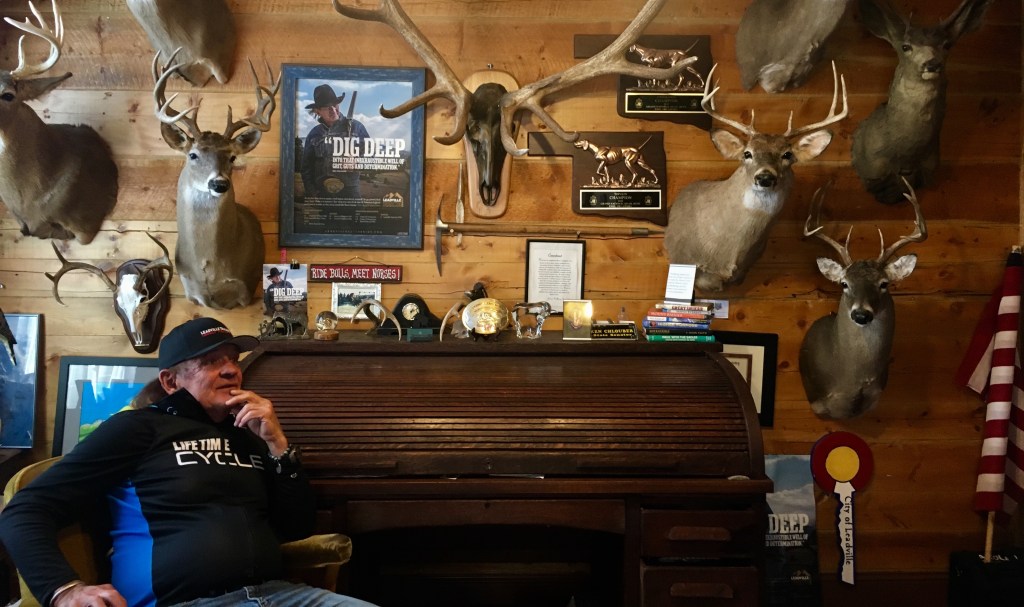
Ken Chlouber in his office | Photo: Zoë Rom
All the typical ills that accompany unemployment began to plague Leadville. The bars filled up with jobless miners. Families grew hungry or packed up and left. Not only had the town lost its primary source of revenue, but community identity was also at stake in a place literally named for that silvery, molybdenum ore pulled from deep within the earth.
It seemed dangerous. What if someone died?
Leadville knew it needed to find a way to save itself, and fast. Community leaders put their heads together in search of a way to draw in tourists. The idea of a fair was floated. Or a 10K race. They knew they needed something big—something that would convince people to stay the night in town, rent hotels and buy food.
That’s when Chlouber had an idea, one potentially grand enough to put Leadville on the map: “What about a 100-mile race?”
Several people, a prominent hospital administrator included, objected. Who would want to run 100 miles? It seemed dangerous. What if someone died?
“Well, then we will be famous, won’t we?” responded Chlouber.
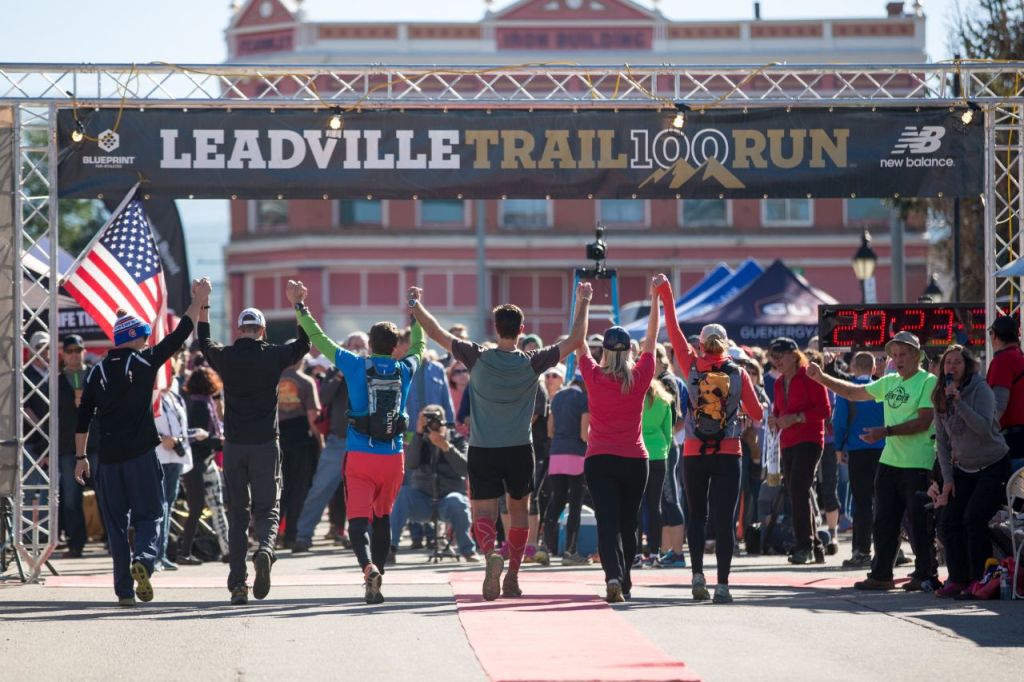
Leadville 100 finish line, 2016 | Photo: Glen Delman Photography
As a sport, ultra-running was still in its infancy. Ultramarathons like the Western States Endurance Run existed but were far from the mainstream. One-hundred-mile runs were not the norm, particularly not those across rugged and mountainous trails following ridges and passes that rise up to elevations just below 13,000 feet. In Leadville, the nation’s highest incorporated town at 10,152 feet, the air is thin and the weather is unpredictable—not ideal, dreamy race conditions.
Nonetheless, in a town running out of options, Leadville decided to give it a shot. The town’s lone travel agent, Merilee Maupin, was hired on as the race director due to her experience organizing the ever popular burro races during Leadville’s Boom Days festival.
Chlouber and other members of the community went to work promoting the new event, distributing pamphlets at running stores along the Front Range in the hopes that a handful of runners would choose to brave the long and technical route.
“I never wanted to ask anybody to do anything that I wouldn’t do, that I was afraid to do.”
The first race in 1983 had 49 entrants, 10 of whom managed to cross the finish line. Among them was Chlouber himself, who traded his shovel and dynamite for sneakers and trail shoes. “In mining, as a boss, I never wanted to ask anybody to do anything that I wouldn’t do, that I was afraid to do,” said Chlouber.
So Chlouber began training, spending days and nights running through Leadville’s rough and rowdy trails. He fell in love with the mountain tops that he had spent so much time beneath as a miner, enjoying the new perspective and freedom that running granted him. Before the advent of GU, Chlouber chomped on Snickers bars for energy. He was determined to finish to prove to the skeptical that it could be done and that running 100 miles in this gritty, oxygen-deprived place just might save it.
Now, he’s completed the race 14 times, earning the prestigious 1,000 Mile belt buckle. Aside from being a miner, Chlouber had been a successful burro racer, where his endurance, grit and “ability to deal with asses,” he chuckles, served him well.
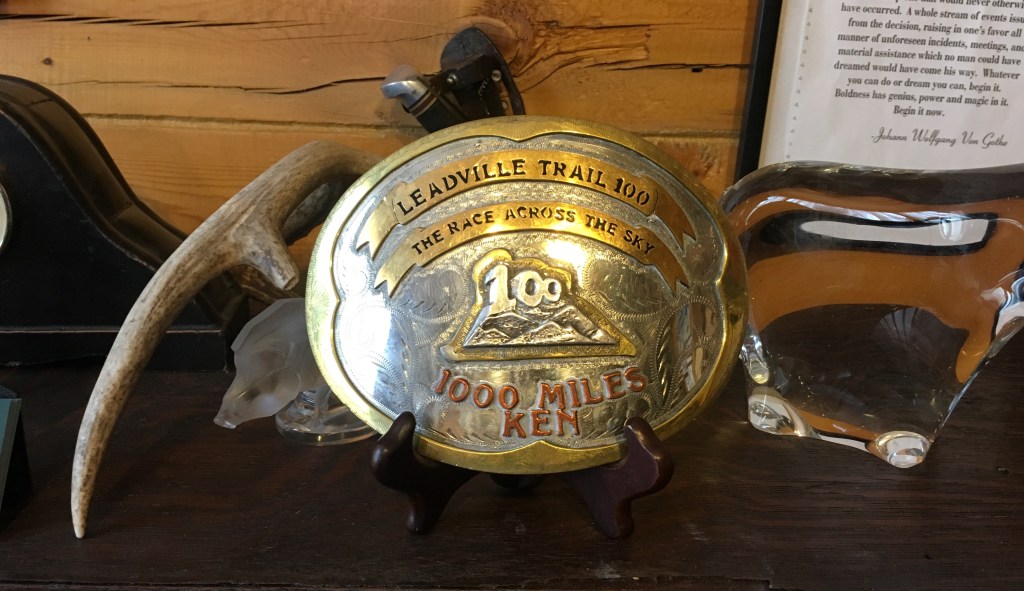
Chlouber’s 1,000 Mile belt buckle | Photo: Zoë Rom
The next year, 100 runners toed the starting line. Then, in 1985, it was featured on the TV series Wide World of Sports. “From there, it just kind of blew up,” said Chlouber.
While ultrarunning remained a fringe sport, it garnered a cult-like following of devoted practitioners. The Leadville 100 gained in popularity, partially due to the beautiful mountain vistas offered from the Collegiate Peaks and the challenge of the course’s elevation, which starts at 10,000 feet and rises to heights of 12,527 feet at Hope Pass. Less than half of participants finish and earn the much coveted Leadville 100 Buckle. The 18,168 total feet of elevation gain make this one of the most harrowing races in the country as runners struggle to traverse technical ridges late into the night. Many runners are pulled off the trail at checkpoints along the way if they fail to meet the 30-hour cutoff time. Others succumb to exhaustion, hypothermia, heat stroke, dehydration and other threats posed by the unpredictable alpine summer weather.
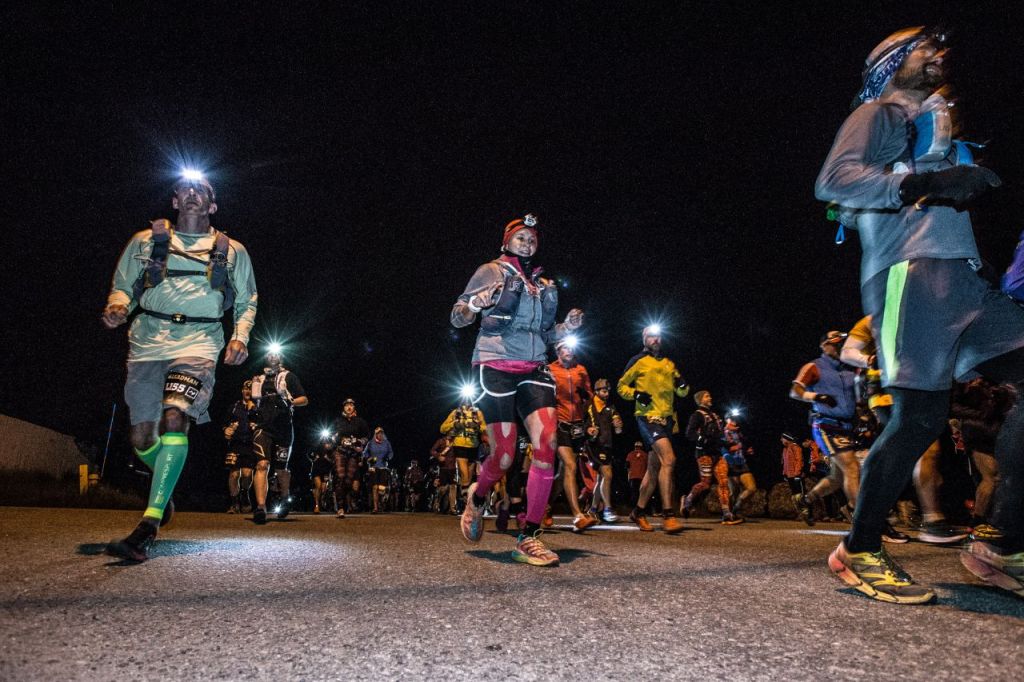
Leadville 2016 | Photo: Glen Delman Photography
Surprised but unphased by the popularity of his event, Chlouber saw an opportunity. In 1994, he added a mountain bike event, challenging bikers to race, yes, 100 miles over rugged mountain terrain.
This year, Leadville expects around 800 runners to bring in approximately $15 million in revenue for Lake County.
Today, both races are so popular that getting an entry is a challenge in and of itself. About 100 spots are reserved for runners who qualify through another Leadville Race Series event: 25 spots each for the Leadville Marathon, Silver Rush 50 and other events held outside of Leadville. Gold coins are distributed to runners who place well within their gender and age category, giving more coins to the more competitive categories. Otherwise, would-be 100-milers must apply for Leadville’s lottery, a system where one in three participants gains entry to the race. While Lifetime Fitness, the company that now owns the Leadville 100, does not disclose the exact number of lottery entrants, its reputation as such an iconic and difficult race has made it one of the most popular lotteries to enter.
This year, Leadville expects around 800 runners to bring in approximately $15 million in revenue for Lake County. “It’s tremendous. The influx of racers is so positive for us. It really helps us pay bills into the year,” said Adam Schuknecht, owner of City on a Hill coffee shop in Leadville. “It brings a lot of people in from all over. Throughout the year, we see people who remember us and they order our coffee online, and it’s overwhelmingly positive for us, and for Leadville.”
Outside of the money that runners spend on hotels and food, the race itself funds a scholarship fund for Leadville High School’s seniors, all of whom receive $1,000 upon graduation to pursue secondary education.
“The community is incredibly supportive,” said Chlouber. “Ninety-five percent are either out there at an aid station or cheering on the runners at the finish line.”
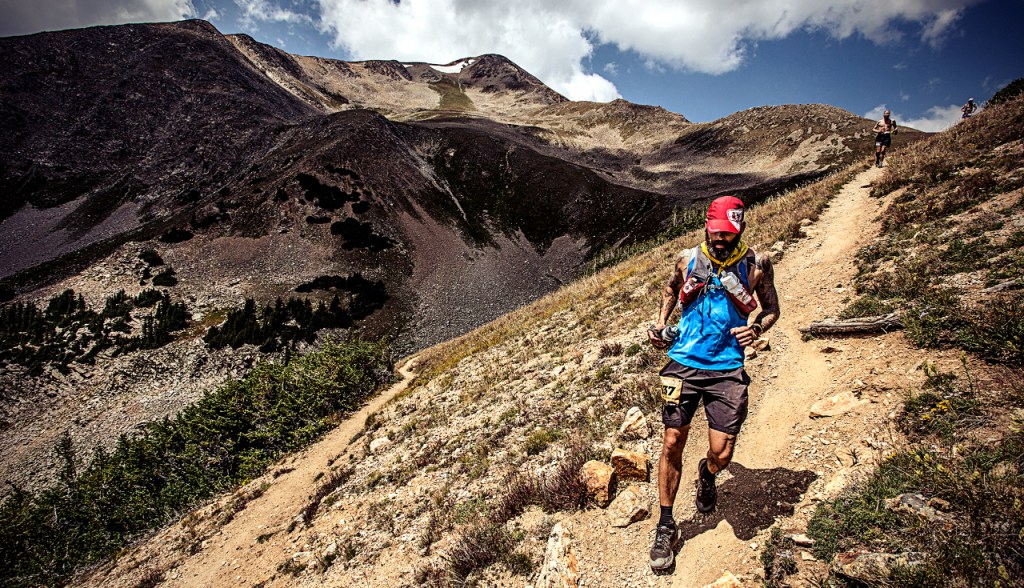
Leadville 2015 | Photo: Glen Delman Photography
The race course acts as a self-guided tour that winds around wooden mine shafts and buildings that bear witness to Leadville’s past. While many are in disrepair, several look well-kept, as if they could suddenly spring back into production. The colorful soil of the trail, too, hints at the mineral wealth just beneath runners’ feet— bright yellows and deep oranges reveal Lake County’s geologic diversity.
Leadville has retained a stable population that hovers around 5,000, 300 of which are still employed in mining. Though it maintains its identity as a working class mountain town, it is now a bedroom community for ski resorts and a destination for adventure seekers. The historic downtown is lined with cheerful and eclectic cottages decorated with ski-fences and steam-punk mining paraphernalia. It’s home to the National Mining Museum and more than one old-school western saloon, just dusty enough that you can imagine it filling up with dungaree-clad miners at the end of the day.
“I love seeing new people, new businesses coming in,” said Chlouber. “It’s the strength, grit, guts and determination that’s inherent in Leadville. We’re not just going to survive, we’re thriving.”
